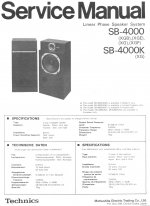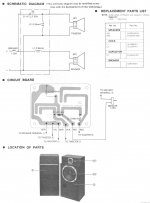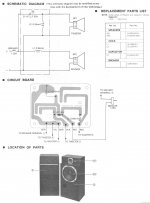Thanks xrk, maybe we could discuss it in multi-way, given the higher crossover.
By the way, I like a little beaming.
By the way, I like a little beaming.
Just saw a pair of these old school things on ebay. Interesting FAST type design with stepped baffle for time alignment and separate enclosure for the 'fullrange'.
Admittedly the XO is 2500hz so a bit more '2 way' area than a true fullrange assisted jobbie.
1st order on the woofer and 2nd on the HF. Probably sound 'average' as is but would be a good project to stick some modern drivers in there!
Admittedly the XO is 2500hz so a bit more '2 way' area than a true fullrange assisted jobbie.
1st order on the woofer and 2nd on the HF. Probably sound 'average' as is but would be a good project to stick some modern drivers in there!
Attachments
It's just a cone tweeter. Quite common for many years, sadly only a handful made today.
Don't kid yourself about the 'modern' drivers part -some of those old Technics linear phase models were actually quite good. Crossover caps may be shot now if they aren't film types, but that's a straightforward fix so if otherwise in good shape, they'll still make decent music for somebody.
Don't kid yourself about the 'modern' drivers part -some of those old Technics linear phase models were actually quite good. Crossover caps may be shot now if they aren't film types, but that's a straightforward fix so if otherwise in good shape, they'll still make decent music for somebody.
Last edited:
I bought some of those super cheap Monacor dome tweets but haven't played with them yet.
No I realise my comment about the drivers isn't quite correct. I have some old 8" wharfedale and leak units i have tried and they are pretty decent if you don't need too much power handling.
No I realise my comment about the drivers isn't quite correct. I have some old 8" wharfedale and leak units i have tried and they are pretty decent if you don't need too much power handling.
I have always liked those Technics stepped baffle speakers. When I was a kid, a Technics amp was the very first “real” amplifier I got as a present for my birthday. Sadly, it got stolen with the Optimus 1B speakers I had. The SB4000 would have been something to have back then.
That's a shame. I've always had a quiet hankering for the SU-C7000 / SE-7000 pre-power combination from the late '90s. Not the best they (or anybody else for that matter) ever made, and few made it outside of Japan, but they were decent enough & I'm a sucker for those huge VU meters. 😉
What is the customary point at which a tweeter becomes a super tweeter vs a regular tweeter? Above circa 6kHz or above 10kHz? Or higher?
We often call 5k up superTweeter area based on drivers like FE208e∑ & FF225wk, both “FR” that start falling off at 5k or so. Historically, superTweeter territory is 12-13k (Spendor BC-1, IMF TLS 80, some of the Dittons).
dave
dave
Aw, the speakers on post 122.........
With the "stepped" baffle, i thought it was a 6db, time / phase aligned loudspeaker........
Unless it is a weird 6db / 24db thing.
With the "stepped" baffle, i thought it was a 6db, time / phase aligned loudspeaker........
Unless it is a weird 6db / 24db thing.
I see a 6 and a 12 (out of phase), and I"ve no idea what natural driver roll offs are.
I'd like to see a driver 6db down at crossover point and 12db down an octave away.
Am i wrong ?
I've got to do some digging on my understanding of crossovers........
I'd like to see a driver 6db down at crossover point and 12db down an octave away.
Am i wrong ?
I've got to do some digging on my understanding of crossovers........
Last edited:
Look at my 10F/RS225 FAST thread. I have an 8in and 3.5in 1st order XO. The driver choice for woofer is critical - must be smooth and flat with breakups at least >2 octaves above the XO. RS225-8 in unique, very few other 8in woofers are as flat and have breakup at 7kHz (nearly 3 octaves above XO point).
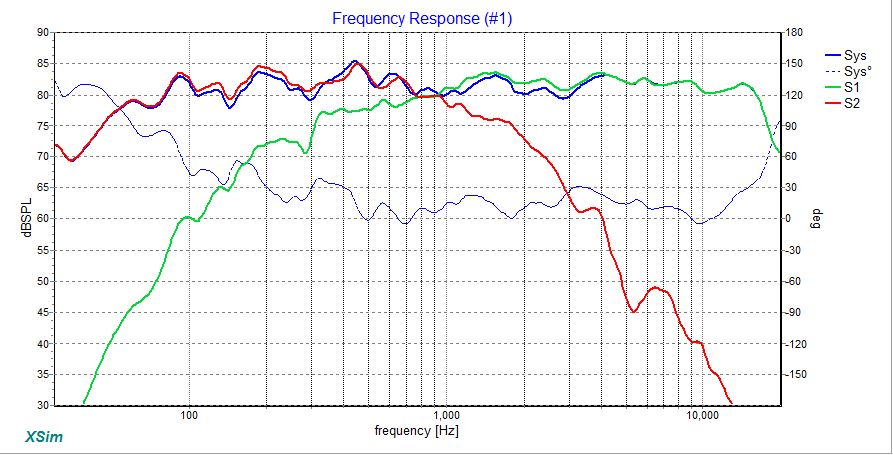
No, you're talking one-dimensionally and picking a frequency is doing a crossover...What is the customary point at which a tweeter becomes a super tweeter vs a regular tweeter? Above circa 6kHz or above 10kHz? Or higher?
I have a set of Fostex 6in woofers designed for the NX6. Fostex uses them crossed at 5kHz. Perhaps a good candidate as the “fullrange” on a STAFT?
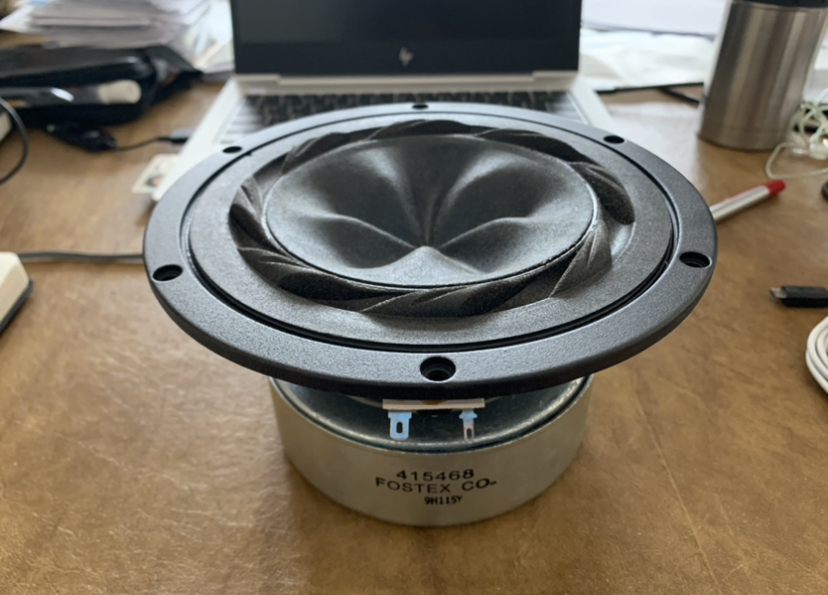
I have not measured it yet, has anyone seen published response curves for this woofer?
I have not measured it yet, has anyone seen published response curves for this woofer?
After all, real musical instruments are omnidirectional.
Not at all.
Comparison of different microphone positions for orchestra instruments
Is it ?
Much of intelligibility is helped from the letters s and t.
The uppermost harmonics of these letters is around 8khz.
Having RTA'd this stuff, go up another octave, easily, unless you're using something like an SM58. Blowing air through a narrow aperture (like teeth) will result in a whistle, which in theory would have a large series of harmonics well into the HF.
AllenB,
From a physics standpoint, Newton’s 2nd law would seem to indicate that a lighter cone would be able to respond to dynamics faster. Lighter mass, faster acceleration. One reason why ribbon tweeters seem to be able to effortlessly go to higher frequencies.
... Or it implies a larger amount of force must be applied. ie, heavier cone = lower efficiency.
+1 on Scott's mention of acceleration correlating (loosely) with HF extension.
Using Hornresp, it can be found that acceleration is low at low frequencies, even though excursions can be large.
Chris
Right. Assuming oscillatory (pistonic) conditions, transient response in a drive unit is proportional to how quickly you can slew current through the coil, as Dan Wiggins & others have shown. The mass of the moving components relative to the available motor power simply determines how efficiently the electrical energy is converted into mechanical movement / acoustical energy.
An even simpler way of looking at it is this: ask 'can this drive unit produce xyz frequency under pistonic conditions, with no HF drop-off through VC inductance'? If the answer is 'yes' then by definition it can move fast enough to handle all lower frequencies down to its mass-corner.
An even simpler way of looking at it is this: ask 'can this drive unit produce xyz frequency under pistonic conditions, with no HF drop-off through VC inductance'? If the answer is 'yes' then by definition it can move fast enough to handle all lower frequencies down to its mass-corner.
Hey Scott,
Looks like you've got PMs disabled here, but I trust you had the best Christmas possible (given, well, everything) and all the best for 2021.
Hopefully see you at a meet when things settle down.
Chris
Looks like you've got PMs disabled here, but I trust you had the best Christmas possible (given, well, everything) and all the best for 2021.
Hopefully see you at a meet when things settle down.
Chris
Hi Chris, likewise -hope you & yours have had the best time possible & very best regards for a much better 2021!
Cheers
Scott
Cheers
Scott
Agreed, it is not true omnidirectional, maybe I should have said omnidirectional-ish. Which is a lot more than just a speaker cone firing forward, that is totally devoid of high frequencies in the sides and tops caused by the beaming at high frequencies.
Oon
- Home
- Loudspeakers
- Full Range
- FAST or STAFT (WAW or STAW) Which is Better?
